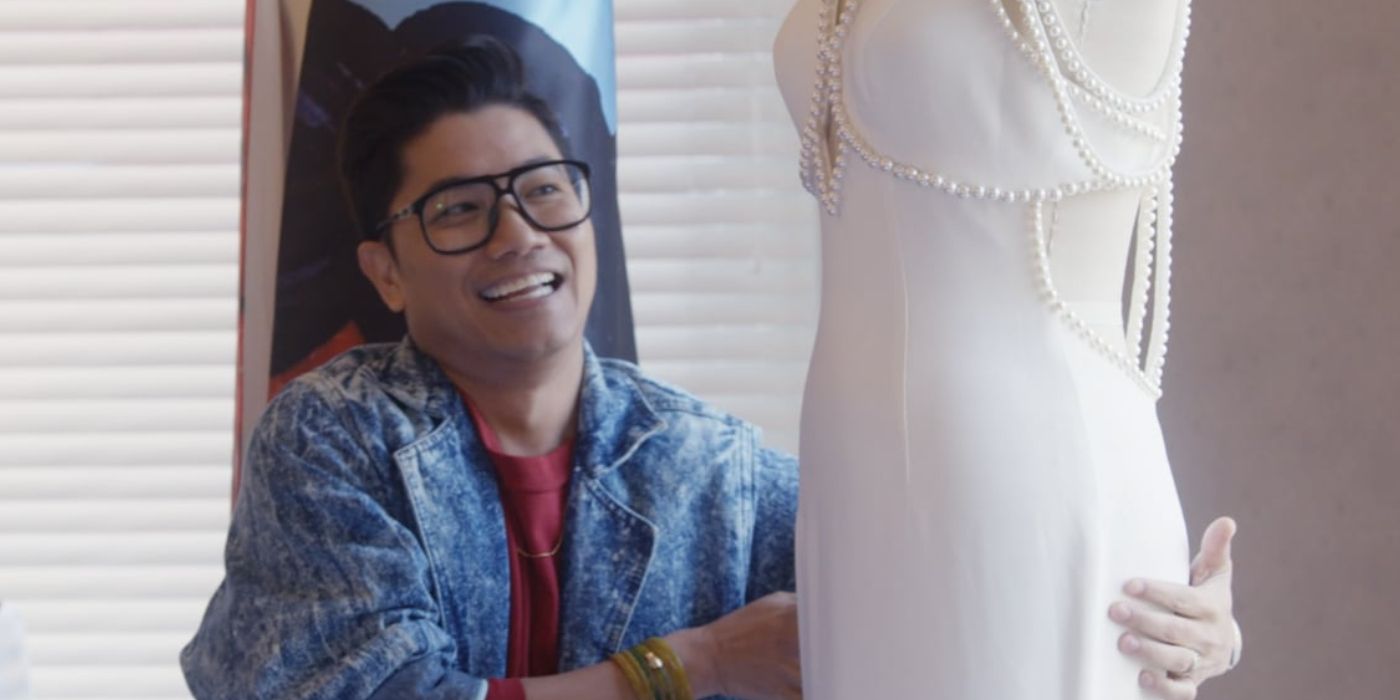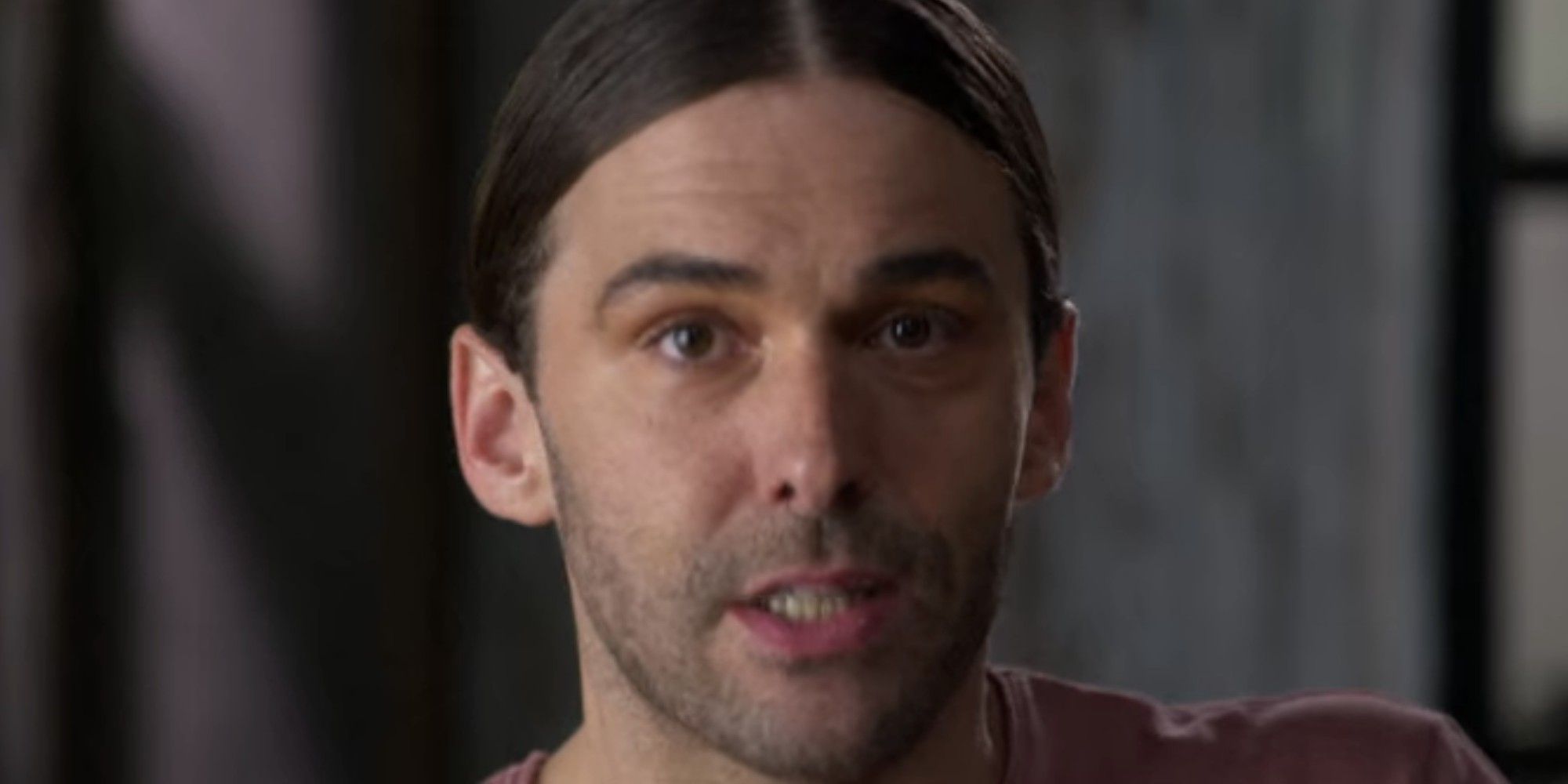Netflix's new series, Say I Do, has all it needs to become a successful reality show, if only it could decide what show it wants to be.
It was clear that the Queer Eye creators served Netflix another potential goldmine when the Say I Do trailer alone sparked major anticipation. The format is similar to its predecessor. An ensemble of gay men, each with his own fabulous specialty, walks into a deserving person's life. This group spreads complementary love and magic (while making the occasional gay joke) and then disappears as mysteriously as it arrived. Instead of providing a makeover for someone at a crossroads, the experts arrange a fantasy wedding for a couple whose big day was delayed by life struggles.
Interior designer Jeremiah Brent, custom couture vet Thai Nguyen, and chef extraordinaire Gabriele Bertaccini are a new version of the "Fab 5" from Queer Eye. This dream team secretly conspires with the episode's client to surprise their partner with a heartfelt proposal and jaw-dropping wedding... all within a week. It has all the makings of the ultimate feel-good show: weddings, decadent imagery, and tear-jerking backstories. However, an ill-defined premise prevents Say I Do from matching Queer Eye's seamless authenticity.
At its core, Queer Eye is a makeover show, but as its tagline states, it's also "more than just a makeover". Yes, the Fab 5 employ their diverse set of skills to revamp their clients' appearances and lifestyles, but all of this external revamping is for the sake of healing ailments of the soul. Each expert hones in on the mental and emotional anchor blocking growth in their specific domain (grooming, fashion, home design, cuisine, and culture). Karamo Brown's role as a culture consultant is overtly geared to pinpoint and ease the client's internal struggles. Understanding that the real aim of the show (soothing the nominees' personal woes through external metamorphosis) is crucial to contextualizing each episode's content and challenges.
It doesn't feel invasive when Karamo encourages the nominee to set boundaries with their ex-wife, or when grooming expert Jonathan Van Ness mentions someone's experience with childhood bullying when cutting their hair. It's all a part of the process— a process that audiences willingly and enthusiastically signed up to watch. Say I Do attempts to give clients the same empowering, transformative journey through a wish list wedding instead of a makeover, but the show's focus on the past renders their interventions for the future out of place.
The series is first and foremost a wedding show, one that could effortlessly squeeze into a TLC lineup without a viewer batting an eye. These weddings are intended as a beacon of light and the end of a tumultuous tunnel for the clients, it's only natural to dive into the soon-to-be-newlyweds emotional backstories to demonstrate why they are undoubtedly deserving. Queer Eye signature moments are peppered in when the Say I Do experts open up and share sentimental stories from their own lives, to bond with the clients. However, when the wedding experts delve deeply into someone's past or push them to make changes for the sake of their future, there's a looming uneasiness, as if some line has been crossed. Isn't the point of the show to throw a happy couple an amazing wedding to celebrate making it through their trials and tribulations, rather than asking them to relive the very trauma that prevented this majestic occasion?
On Queer Eye, they have to dig deep and get personal. That's the point The Fab 5 shine love and happiness on the people they help, so those people leave the show with more than just makeovers. Say I Do, however, is about celebration, not transformation. Asking the couples to rehash their darkest moments each day, as their nuptials loom, doesn't exactly set the mood. It is crucial to understand why this day was so elusive to truly appreciate its arrival, but not to the extent where the show's wedding planner, Jeremiah, encourages a groom to confront his father about his undesirable relationship with the groom's sons. The series unnecessarily pushes its guests into a state of vulnerability that would be appropriate in Queer Eye but has no defined purpose in Say I Do.
This incompatibility between the show's premise and its content is never clearer than in each expert's one on one with the guest star. Firstly, the editing interjects each expert's segment with the others, having viewers hop between conversations rather than watch one's full progression. In Queer Eye, the expert monopolizes the guest time in the edit, clearly detailing how the conversation led from cutting lemons to divulging intimate details about cooking with one's estranged mother.
By cutting between separate conversations, and thus separate intimate moments, Say I Do's style makes it difficult to get a footing in the conversation and grow one's interest alongside it. Episode 3 leaves a conversation between Gabriele and client Nikko as they cheer over tacos, returning as Gabriele questions Nikko's run-in with the law. The transition, or lack thereof, is jarring without the middle of the conversation. Alongside appearing abrasive and produced, it doesn't seem to offer Gabriele any insight into how to better prepare the catering menu, which is the main issue.
Say I Do, like Queer Eye, wants to be more what it is— more than just a wedding show. As it stands, the premise does not allow it to do so naturally. The featured couples have already relinquished privacy and intimacy for their big day, allowing camera crews and three strangers to swarm around their celebration of love. Queer Eye is just as invasive and revealing, but they're rewarded with the potential to start anew, after a process that requires vulnerability. Say I Do reasonably asks guests to share the story that got them cast on the show in the first place, but there comes a point where it becomes exploitative, selling a peek into the family's private life for a wedding extravaganza that could have been planned just as beautifully without the emotional turmoil. When it comes to Say I Do and Queer Eye, which show is your favorite?


